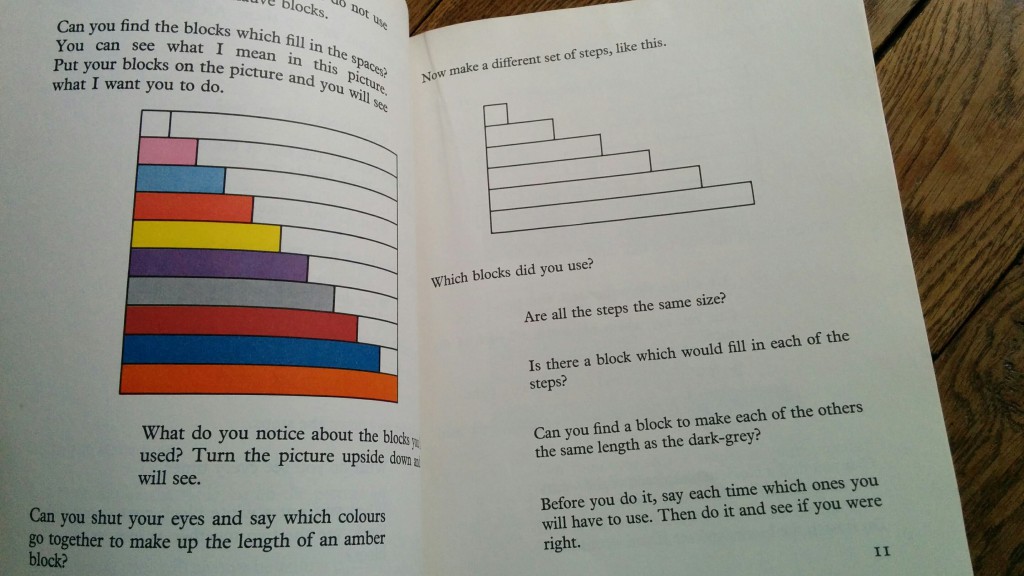That’s it: I’ve finally ordered my Colour-Factor Set. I can’t wait to start using it with my oldest. Created by Seaton Pollock in the early sixties, its a way of using 3D objects to represent the relationship between numbers. Pollock found it strange that so many kids hate maths and consider themselves bad at the subject. He wanted to overthrow traditional teaching methods which he blamed for putting pupils off maths. His new way was to teach maths using something other than numbers: a set of coloured blocks for making shapes which “behave” like numbers.
Many schools in Britain had a copy of these blocks in the seventies, but it seems most teachers didn’t know the method. I vaguely remember the remnants of a similar set kicking around at my primary school in the early nineties, but nothing was really done with them except perhaps to compare lengths. Now I didn’t do any maths at all after the age of 16, the British educational system being what it is. But I got so excited about the Colour-Factor Set I’ve even been reading books on mathematics – a first for me.
Apart from the major sleep debt that begins when you have a baby and just grows from there, I have grown myself a reading debt which I find equally disturbing, and any precious moments that I get with a book are gold dust to me. So it’s got to be a really good read.
Part of the reason I’ve invested my tiny reading allowance in this little-used, largely forgotten method is because it’s another gem from Anything School Can Do You Can Do Better, by Máire Mullarney. I already tried her approach to teaching literacy and in practice, it worked wonderfully: my three-year old now reads. So why not maths too? It looks fun, and the first phase of the method centres on playing with the blocks and doesn’t include any actual number work. I’m not planning on working on sums in the near future; rather, these blocks offer a way to start understanding numbers before even introducing them.
I also got really excited about this set because I need to visualise numbers and I tend to associate colours to number values anyway. I know how different it feels to succeed at something because I get it, and to succeed only through perseverance and memorisation. In the latter case you don’t bother taking things any further than you have to.
So far I’ve read the following books:
Colour-factor mathematics: A general introduction based on the colour factor set
Colour-Factor Mathematics: The First Year Part 1: Pre-Number Mathematics [This is the pupil's book.]
Colour-Factor Mathematics Teachers’ Handbook to Parts 1 and 2 of The First Year
They are short and have me more convinced than ever it is worth a try. Mullarney dedicated chapter 8 of her book to The Teaching of Number, and Colour Factor is discussed there (pages 36-40 or search for “color” à l’amércaine) if you want to check out her persuasive explanation, though without the blocks in front of you it’s a bit confusing. I’ll do regular updates on how it goes with the Colour-Factor, though to be honest since the first phase seems to be largely playing with blocks, there may not be a great deal to say. If you have any experience of Colour-Factor or similar methods, do share.
